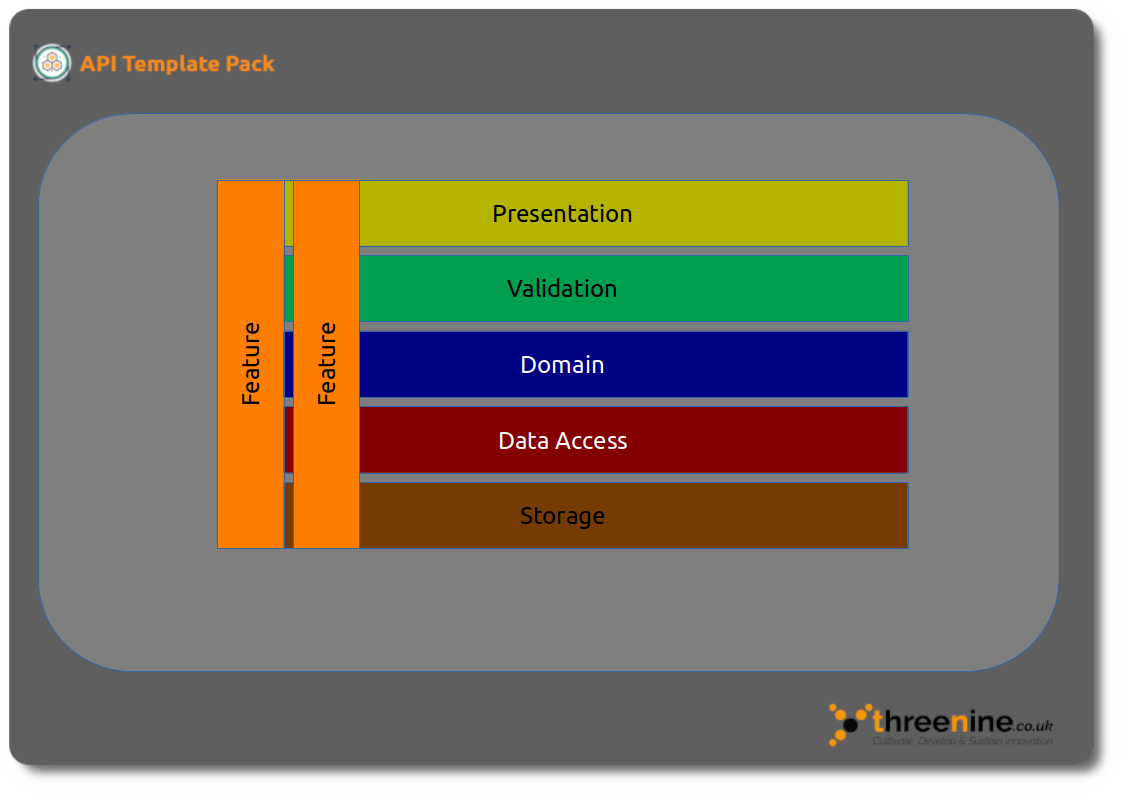What is Vertical Slice Architecture
The Vertical Slice Architecture (VSA) is a technique that helps developing maintainable applications by separating the application around Features, Activity or Vertical Slice.
This practice is influenced by an Agile project management practice of Vertical Slicing, where a work item is slimmed donw to a narrow focus. In other works, breaking the work into smaller pieces. Yet, the pieces have all the functions to be stand-alone. It may or may not require more features to be truly useful. However, as a piece of the system, it works on it’s own.
The key concept to note is that you will need all pieces of the system components to be included, so that the work can function with this piece of work.
Ultimately, Vertical Slicing is a process of breaking work up, splitting up larger functionality into more bite-sized pieces of work that an Agile Software development team can go execute on. This also ensures that once executed, it could be completed and the business or system gain value from it.
In the software development approach we think of the application code in terms of features rather than the specific layer that it sits in. We treat each feature as a vertical slice, because every feature within the application is a separate component and it change change and evolve independently.
When developing applications using this approach we consider every request and response as distinct use cases. Taking this a step further and thinking about REST API’ we can further break the Requests into either Queries or Commands, which ultimately is also derived from CQRS (Command Query Responsiblity Segregation)

A feature or slice covers all the layers of a traditional architecture design and instead of coupling across a layer, we couple along the “slice”. The aim is to maximize cohesion in the slice while minimizing coupling between the slices.
Principles of Vertical Slice Architecture
Use-case Driven
System are developed based on a slice and structured around Features and Capabilities. Splitting off features/capabilities for things like scaling out is much less difficult.
Melting Abstractions
There are no gates or barriers across layers - everything needed for the system to do something is included in the slice itself where possible.
Axis Of Change
a core tenet of vertical slicing is a belief tha things that change together should be near each other. Whenever a feature is added, removed, or changed the things that change should not be scattered across the entire code base. Therefore removing, deleting or editing a feature can be done by working in one folder.
Advantages of Vertical Slice Architecture
Reduce coupling
Using Vertical Slice Architecture, we reduce coupling between features. Focusing on a single slice while implementing a feature rather than different layers, thus improving maintainability.
External Interactivity
Each slice is independent and able interact with external resources. Different slices using distinct ways to persist data without interfering with each other.
Command and Query Responsibility Segregation
Application code split between the Queries and Commands. This segregation helps us to treat each feature as a distinct use case. Queries are typically GET or Read data, while Commands are typically POST, PUT PATCH, DELETE or Write data to a store.
Feature Grouping
Enforcing high cohesion within a slice, code for the feature is only used by the feature. This leads to ease of implementation and maintainability.
What about Layered Architecture ?
Layered architecture or as it is also commonly known Onion Architecture or Hexagonal Architecture or even N-Tier architecture is almost the defacto pattern that a majority of developers will try to implement when starting to develop systems. Primarily, because it is the by far the easiest and simplest pattern to understand for many it makes logical sense. But, this does not mean to say it makes it the best choice for all software applications.
In fact, in the Fundamentals of Software Architecture: An Engineering Approach the overall ranking of the pattern is poor to medium and only really excels in simplicity and initial cost of development but generally rates poorly in most other categories, including scalability, elasticity, evolutionary, modularity and deployability.
In some respects belief in the Layered Architecture pattern has reached religious proportions with many developers attempting to justify and defend it against all odds.
The API Template Pack does not necessarily stop or get in the way of you implementing any layered architecture approach in your application however it is attempt to dissuade or prompt you into exploring many alternative patterns and practices.